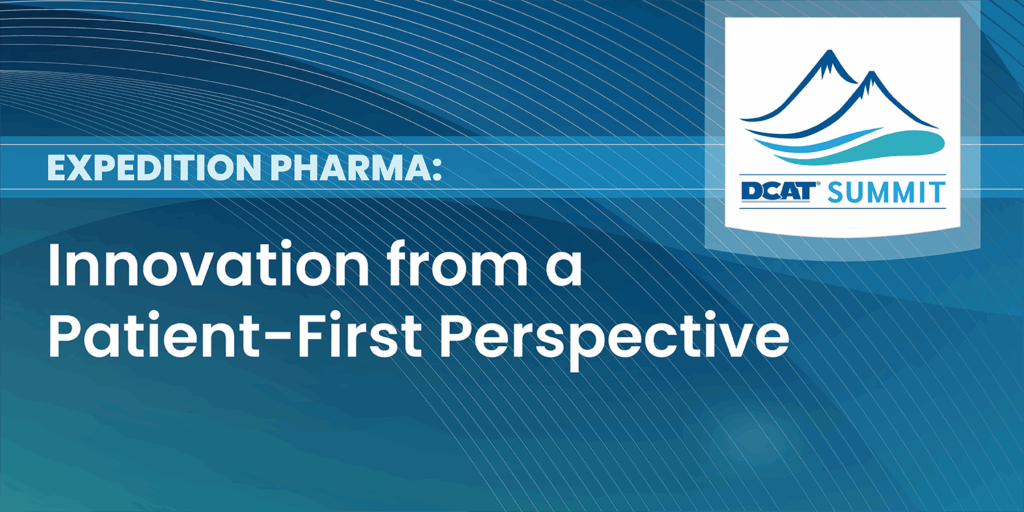The DCAT Summit at Lugano Recap: Serving Patients through Agility and Innovation in Development and Manufacturing

At the DCAT Summit at Lugano, “Expedition Pharma: Innovation from a Patient-First Perspective,” held June 4–5, 2025, in Lugano, Switzerland, pharmaceutical leaders emphasized that agility and innovation are not optional—they are central to bringing much needed therapies to patients. With treatment modalities becoming more complex and competitive pressure on timelines, companies must adapt their approaches to stay ahead and serve patients better. Speakers shared strategies for nimble development, streamlining manufacturing, and ensuring that new therapies are designed with real-world care settings in mind.
Accelerating clinical milestones
Jesús Castañón, Senior Director of Discovery Chemistry at Eli Lilly & Company, underscored the need to move drug candidates into the clinic faster—even as molecular structures become more complex. Achieving this goal requires technical capabilities, bold execution, operational excellence, and what Castañón calls “extreme collaboration.”
He pointed to precompetitive partnerships with academic institutions as critical for early access to enabling technologies such as flow chemistry, ozonolysis, and electrochemistry. Internally, tight coordination across medicinal chemistry, synthetic chemistry, and CMC (chemistry, manufacturing and controls) teams allows development hurdles to be addressed earlier—before they become bottlenecks. “The early partnership between discovery and development is essential for acceleration,” Castañón said.
Advancing manufacturing for antibody–drug conjugates
To meet patient needs, Arul Ramadurai, Chief Commercial Officer at Axplora, underscored the importance of continual innovation in manufacturing for antibody–drug conjugates (ADCs), a strong and growing modality in cancer treatments. “ADCs are powerful new therapies that are evolving all the time, with over 600 companies out there working on them,” said Ramadurai. “Manufacturing organizations have to be prepared for the wave that is coming.”
ADCs face unique development and manufacturing challenges to get from preclinical to commercial production in just a handful of years, he noted. Achieving better process efficiency for improved batch size and increasing production yields while handling highly potent compounds and optimizing purity are keys to addressing the complexity associated with this modality. Overcoming these challenges enables these targeted therapies to be delivered to patients safely and quickly.
Overcoming barriers in cell therapy
David Smith, Vice President and Head of Development at Made Scientific, a CDMO of cell therapies, addressed the disconnect between promise and access in cell therapies. Despite major clinical advancements, only 1% of eligible patients have received these treatments. The complexity of personalized manufacturing—where every batch is tied to one individual—demands a new kind of ecosystem, he said.
Smith called for tighter alignment between biotech companies, hospitals, academic centers, and supply partners to improve scalability and reduce time to treatment. “This is a call to arms to support this venture and to get these medicines to those who need them,” said Smith. “The need is growing, the opportunity is real, and the impact is measurable.”
Designing patient-centered delivery
Anthony Cheung, Chief Scientific Officer at enGene, a clinical-stage bio/pharma company, reminded attendees that innovation isn’t just about molecules—it’s about how the product can get to the patient. In developing a bladder cancer gene therapy for use in community clinics, his team intentionally avoided cold-chain and specialized handling to reduce logistical hurdles.
“It was very important to understand where these patients are being treated, and the limitations the patients and caregivers will face, before we developed a product for them,” said Cheung. This design choice allows for safer, more scalable treatment in frontline care settings—not just university hospitals.
Staying ahead of the curve
These discussions at the DCAT Summit at Lugano reinforced that delivering on the promise of new therapies depends on the ability to adapt—scientifically, operationally, and collaboratively. From early development through manufacturing and delivery, every step presents an opportunity to reduce delays and remove barriers to access. Moving faster and smarter will be essential to meeting that challenge.
Note: This is part of a series of articles providing key highlights and insights from the DCAT Summit at Lugano: Expedition Pharma: Innovation from a Patient-First Perspective, which was held June 4–5, 2025, in Lugano, Switzerland.
See here for Part I, Driving Value through Patient-Centricity in Drug Development and the Supply Chain and here for Part II, Innovation at the Foundation of Pharmaceutical Development & Manufacturing


